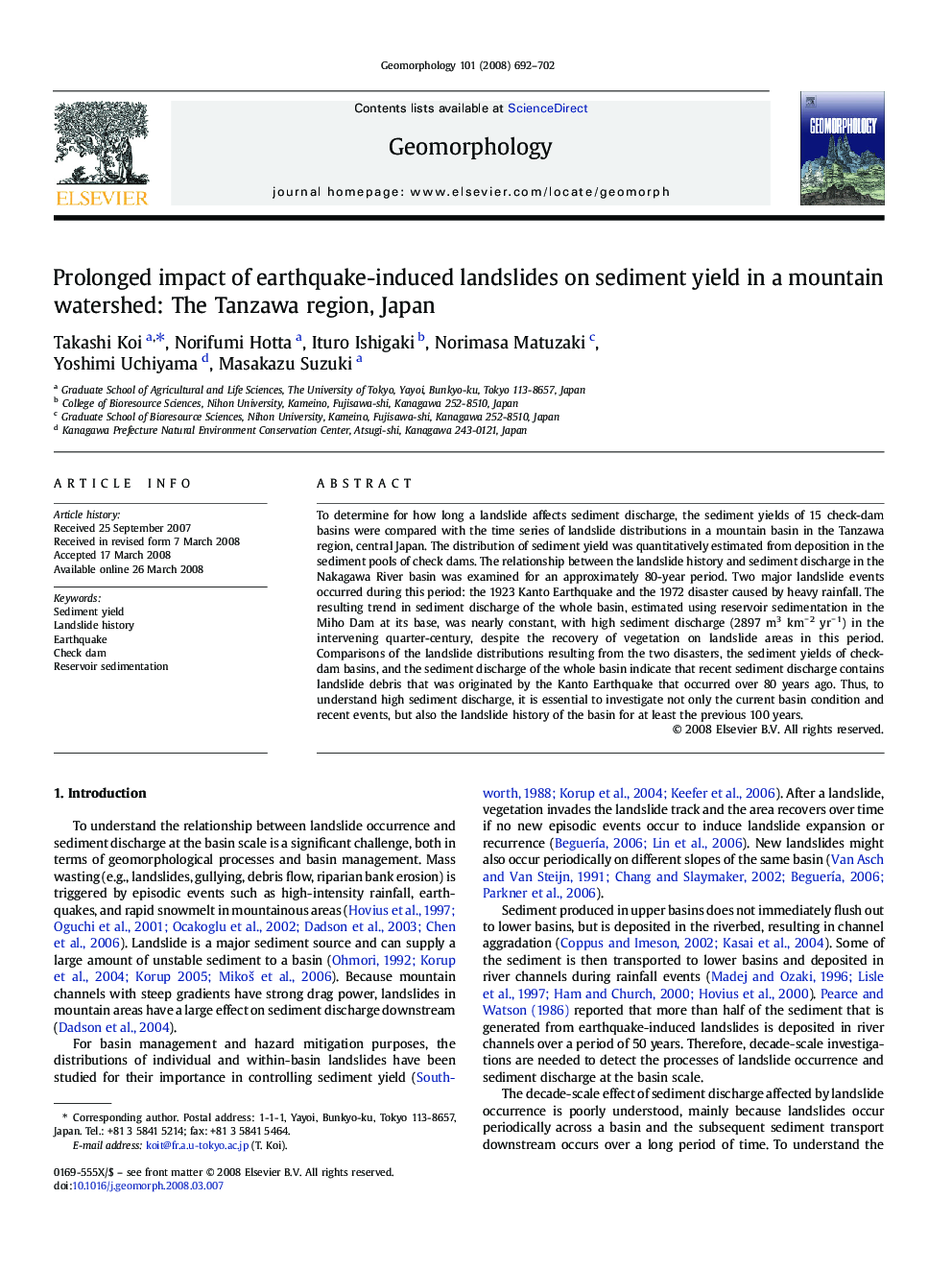| Article ID | Journal | Published Year | Pages | File Type |
|---|---|---|---|---|
| 4686589 | Geomorphology | 2008 | 11 Pages |
To determine for how long a landslide affects sediment discharge, the sediment yields of 15 check-dam basins were compared with the time series of landslide distributions in a mountain basin in the Tanzawa region, central Japan. The distribution of sediment yield was quantitatively estimated from deposition in the sediment pools of check dams. The relationship between the landslide history and sediment discharge in the Nakagawa River basin was examined for an approximately 80-year period. Two major landslide events occurred during this period: the 1923 Kanto Earthquake and the 1972 disaster caused by heavy rainfall. The resulting trend in sediment discharge of the whole basin, estimated using reservoir sedimentation in the Miho Dam at its base, was nearly constant, with high sediment discharge (2897 m3 km− 2 yr− 1) in the intervening quarter-century, despite the recovery of vegetation on landslide areas in this period. Comparisons of the landslide distributions resulting from the two disasters, the sediment yields of check-dam basins, and the sediment discharge of the whole basin indicate that recent sediment discharge contains landslide debris that was originated by the Kanto Earthquake that occurred over 80 years ago. Thus, to understand high sediment discharge, it is essential to investigate not only the current basin condition and recent events, but also the landslide history of the basin for at least the previous 100 years.
